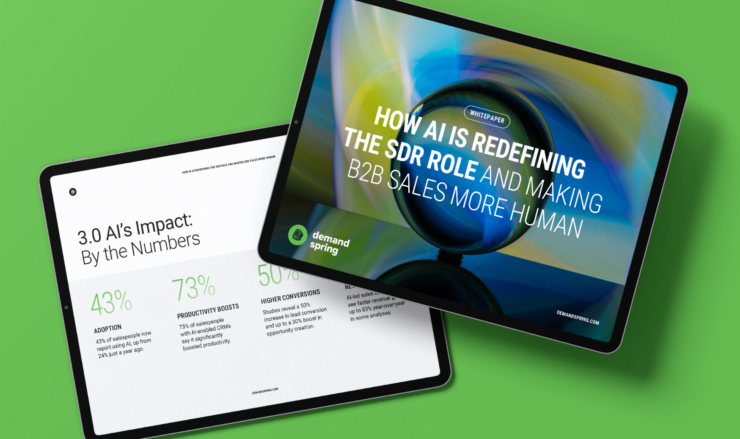Welcome back to our AI Playbook series! In Part 3, we’ll focus on GenAI Prompt Engineering and Optimization. If you missed Part 2, catch up here with Intelligent SEO Optimization and Link Building.
As marketing teams increasingly rely on Generative AI (GenAI) tools to help their content strategies, the real challenge isn’t just about adopting these tools—it’s about mastering GenAI Prompt Engineering. The foundation of successful AI-driven marketing lies in one key area: prompt engineering. In this blog, we’ll dive deep into the art and science of crafting and optimizing prompts, explore how different AI tools like OpenAI, Microsoft Copilot, Bard, and Claude respond to these prompts, and offer actionable strategies to prepare for the future of search with Search Generative Experience (SGE). By the end, you’ll have actionable insights to enhance your AI content strategy.
Why GenAI Prompt Engineering Matters
Understanding GenAI Prompts:
In the world of Generative AI (GenAI), prompts are the driving force behind the outputs generated by AI models. A prompt is essentially a set of instructions that guides the AI on what kind of content to create. The more precise and aligned these instructions are with your goals, the better the content you receive.
The Challenge:
Despite the power of GenAI, many marketing teams struggle with creating effective prompts. Vague or poorly constructed prompts often lead to content that’s off-brand, irrelevant, or simply not useful. This not only limits the effectiveness of your AI tools but can also lead to wasted time and resources.
The Opportunity:
By mastering GenAI prompt engineering, you can unlock the full potential of AI content creation, ensuring that every piece of content generated is high-quality, relevant, and aligned with your brand’s voice and objectives.
How to Engineer Effective GenAI Prompts
1. Be Specific and Clear:
A good prompt provides clear instructions. For example, if you want the AI to generate a blog post on “The Future of AI in Marketing,” your prompt should include specifics like the tone (e.g., professional, conversational), key points to cover (e.g., emerging trends, tools to watch), and the desired length.
2. Provide Context:
AI models like OpenAI and Microsoft Copilot perform better when they understand the context. For instance, if you’re generating content for a tech-savvy audience, let the AI know. A prompt like “Create an in-depth analysis of AI trends for an audience familiar with technology and AI” will yield more targeted results.
3. Iterate and Optimize:
Prompt engineering is not a one-and-done process. Test different prompts, analyze the results, and refine them over time. Even small tweaks, like changing a word or adding an example, can significantly improve the output.
Leveraging Different GenAI Tools: OpenAI, Microsoft Copilot, Bard, and Claude
Each Generative AI tool has its own strengths and nuances. Understanding how to tailor your prompts to each tool can make a big difference in the quality of content you generate.
1. OpenAI:
OpenAI’s models, like GPT-4, are known for their versatility and ability to generate detailed, human-like text. Best Practice: Use OpenAI for content that requires creativity and depth. When engineering prompts for OpenAI, include specific details and examples to guide the AI in producing content that meets your expectations.
2. Microsoft Copilot:
Microsoft Copilot is designed to integrate with Microsoft’s suite of tools, offering assistance across various tasks, from writing to data analysis. Best Practice: When using Copilot, craft prompts that are directly tied to the task at hand, whether it’s drafting an email or creating a report. Include specific instructions like the preferred format, data points to highlight, or any other context that ensures accuracy.
3. Bard:
Google’s Bard AI excels in generating creative content, such as stories and scripts. Best Practice: For Bard, focus on prompts that inspire creativity. Specify the themes, characters, or plot points you want Bard to explore, and encourage the AI to push creative boundaries while maintaining alignment with your brand’s messaging.
4. Claude:
Claude, developed by Anthropic, emphasizes ethical AI usage and is ideal for content where safety and alignment are priorities. Best Practice: When using Claude, ensure your prompts reflect ethical considerations and brand values. For example, if generating content around sensitive topics, include clear ethical guidelines in your prompt to guide the AI’s response.
Optimizing for Search Generative Experience (SGE)
The rise of Search Generative Experience (SGE) represents a major shift in how users discover content online. Unlike traditional search engines that prioritize ranking existing content, SGE leverages AI to generate real-time responses, making GenAI prompt optimization even more critical.
How to Prepare for SGE:
Focus on Content Structure: Ensure your content is well-structured, with clear headings, bullet points, and concise language. This makes it easier for AI to generate accurate and relevant answers.
Create Adaptive Content: Develop content that can be easily adapted for different formats and contexts. For example, a well-crafted blog post can be repurposed into a social media thread, infographic, or video script, enhancing its utility across various platforms.
Continual Prompt Optimization: As SGE evolves, so should your prompts. Regularly test and refine your prompts based on performance data to keep your content competitive in this new search environment.
At Demand Spring, we understand that mastering GenAI prompt engineering is essential for maximizing the value of AI in your marketing strategy. Our approach is designed to equip your team with the skills and strategies needed to excel in this area.
Key Offerings to Enhance Your Strategy:
Custom AI Prompt Libraries: We help you build a comprehensive library of prompts tailored to your brand’s voice, industry, and goals, ensuring consistent and high-quality AI-generated content.
AI Content Strategy Workshops: Our workshops focus on hands-on learning, teaching your team how to craft and optimize prompts across various Generative AI tools, preparing you for the future of content creation and search.
Ongoing Support and Performance Tracking: We provide continuous support, helping you refine your prompts and track the performance of AI-generated content to ensure ongoing improvement and alignment with your objectives.
Seamless Workflow Integration: We ensure that AI-generated content integrates smoothly with your existing workflows, enhancing efficiency and enabling your team to focus on strategic initiatives.
GenAI prompt engineering and optimization are crucial for getting the most out of AI tools in marketing. By applying the principles and strategies discussed in this blog, you can improve the quality and relevance of your AI-generated content, stay ahead in the evolving search landscape, and ultimately achieve better results. Learn more about our Artificial Intelligence services for B2B organizations helping you build an AI-first marketing mindset.




